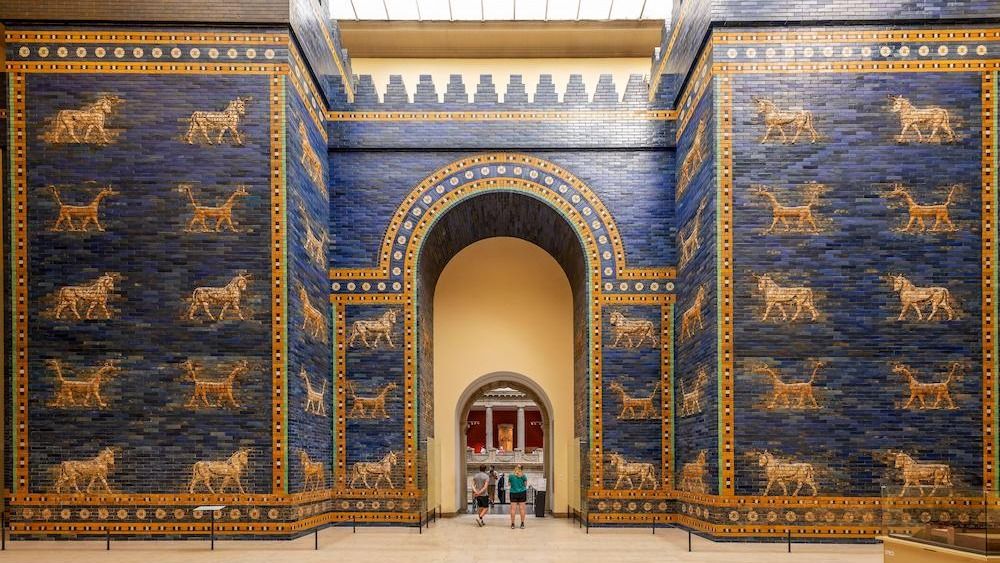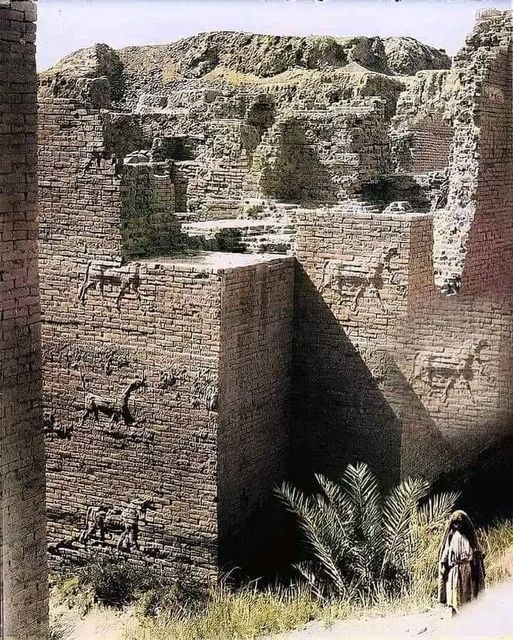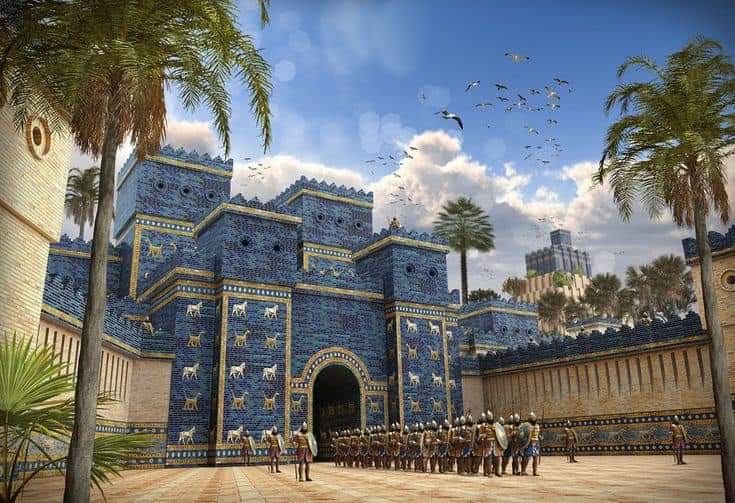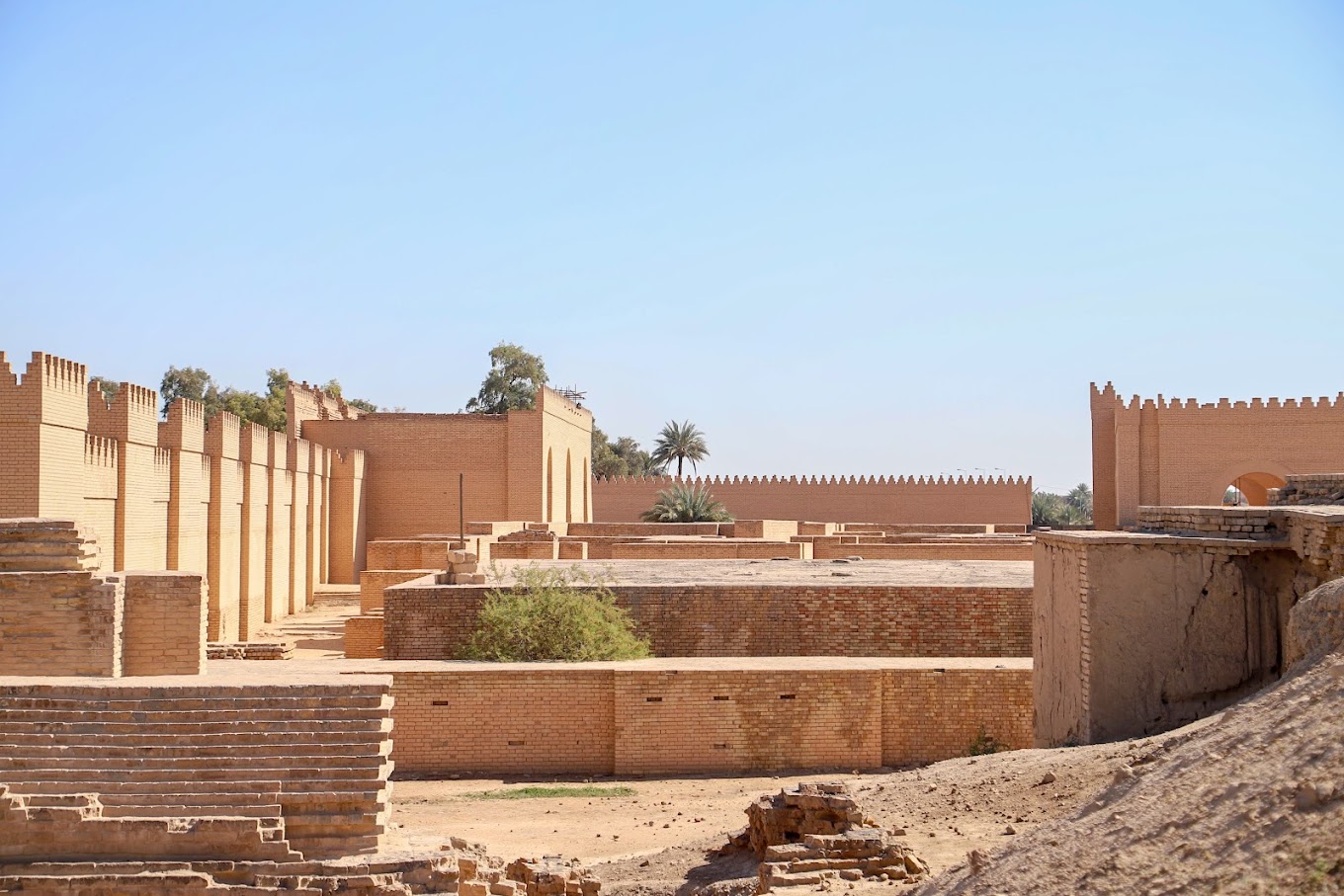The Ishtar Gate, a monumental testament to the grandeur of ancient Babylon, stands as a vivid reminder of the city’s power and artistic prowess. Constructed around 575 BCE by King Nebuchadnezzar II, this magnificent gateway was not just an entrance but a symbol of divine protection and imperial might.
Architectural Grandeur and Divine Dedication
The Ishtar Gate’s construction and design reflected the advanced architectural skills and deep religious beliefs of the Babylonian civilization.
A Symbol of Imperial Power
Nebuchadnezzar II’s decision to build the Ishtar Gate served as a powerful declaration of Babylon’s imperial strength and his own divine mandate.

- Fortification and Grandeur:
- As a key component of Babylon’s formidable fortifications, the Ishtar Gate was designed to impress and intimidate. Its sheer size and elaborate decorations underscored the city’s military and political dominance.
- It highlighted fortification and grandeur.
- Royal Commission and Dedication:
- Commissioned by King Nebuchadnezzar II, the gate was a royal project, showcasing the king’s wealth and power. Its dedication to the goddess Ishtar, a major deity in Babylonian mythology, linked the city’s might to divine protection.
- It showed royal commission and dedication.
- Strategic Importance:
- Beyond its symbolic role, the Ishtar Gate served a crucial strategic function, controlling access to the inner city and protecting it from potential invaders. Its robust construction and strategic placement reflected Babylon’s sophisticated urban planning.
- It highlighted strategic importance.
Artistic Mastery and Vibrant Decoration
The gate’s distinctive blue-glazed bricks and intricate reliefs showcased the artistic mastery of Babylonian artisans.

- Blue-Glazed Bricks:
- The use of vibrant blue-glazed bricks, a hallmark of Babylonian architecture, gave the gate a striking and otherworldly appearance. This technique, requiring advanced kiln technology, highlighted the city’s technological sophistication.
- It highlighted blue-glazed bricks.
- Reliefs of Mythical Creatures:
- The gate was adorned with detailed reliefs of dragons, lions, and bulls, each representing important Babylonian deities. These meticulously crafted reliefs served both decorative and symbolic purposes, invoking divine protection and power.
- It showed reliefs of mythical creatures.
- Symbolic Representation:
- Each creature depicted on the gate held symbolic significance. Lions represented Ishtar, bulls represented Adad, and dragons represented Marduk. The choice of these animals reinforced the gate’s role as a divine portal, linking the earthly realm with the celestial.
- It highlighted symbolic representation.
Historical Decline and Modern Reconstruction
The gate’s journey from ancient glory to modern reconstruction is a story of rediscovery and cultural preservation.

- Centuries of Decline:
- Over centuries, Babylon fell into decline, and the Ishtar Gate was buried beneath the sands of time. Its rediscovery was a pivotal moment in understanding ancient Mesopotamian civilization.
- It highlighted centuries of decline.
- Excavation and Rediscovery:
- The gate’s excavation in the early 20th century revealed its remarkable state of preservation and the brilliance of Babylonian craftsmanship. This archaeological find provided invaluable insights into the city’s history and culture.
- It showed excavation and rediscovery.
- Pergamon Museum Reconstruction:
- The reconstruction of the Ishtar Gate in the Pergamon Museum in Berlin allows modern audiences to experience the grandeur of this ancient masterpiece. This effort to preserve and display the gate’s remains underscores its enduring cultural significance.
- It highlighted Pergamon Museum reconstruction.
Enduring Legacy and Cultural Significance
The Ishtar Gate’s legacy extends beyond its architectural achievements, serving as a symbol of Babylon’s cultural and historical importance.
Symbol of Babylonian Achievement
The Ishtar Gate remains a powerful symbol of Babylon’s architectural and cultural achievements, representing the pinnacle of Mesopotamian civilization.

- Architectural Marvel:
- The gate’s design and construction stand as a testament to the advanced architectural skills of the Babylonians. Its monumental scale and intricate decorations continue to inspire awe and admiration.
- It highlighted architectural marvel.
- Cultural Heritage:
- The Ishtar Gate represents a vital part of human cultural heritage, offering insights into the beliefs, artistic traditions, and technological capabilities of ancient Babylon.
- It showed cultural heritage.
- Historical Inspiration:
- The gate’s influence can be seen in various forms of art and architecture, serving as a source of inspiration for modern artists and historians. Its enduring presence reminds us of the rich history of human civilization.
- It highlighted historical inspiration.
Conclusion:
The Ishtar Gate, with its vibrant blue bricks and majestic reliefs, continues to captivate and inspire. It serves as a powerful reminder of ancient Babylon’s grandeur and its lasting contribution to human civilization. Its reconstruction allows us to glimpse the splendor of a bygone era, ensuring that the legacy of this architectural masterpiece endures for generations to come.

CÁC TIN KHÁC
Mary Walton: The Forgotten Inventor Who Helped Clean Up America’s Cities
Tomb of Queen Nefertari in the Valley of the Queens, Egypt
Discover the Hypostyle Hall of the Temple of Hathor at Dendera
Venus de Losange: Unveiling the Mystery of a 20,000-Year-Old Paleolithic Icon